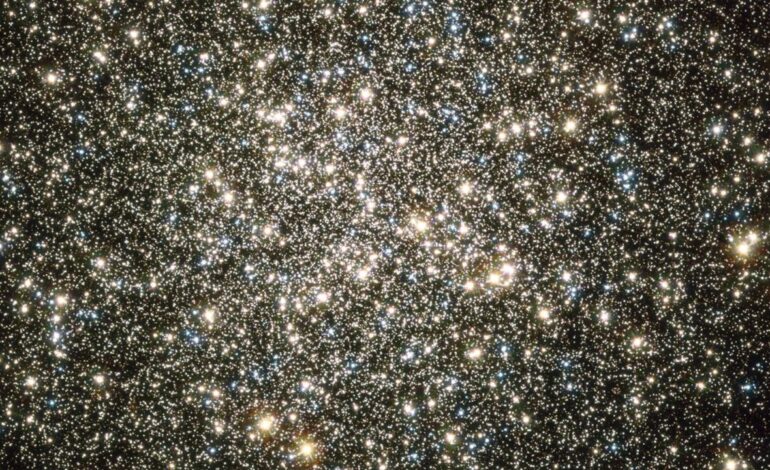Discover Three Stunning Star Clusters Brightening August Nights

Mid-August 2025 offers an extraordinary opportunity for skywatchers in the northern hemisphere to witness three spectacular star clusters. As summer nights unfold, conditions become ideal for observing these celestial wonders, which are collections of stars bound together by gravity and formed from the same interstellar cloud.
Star clusters are categorized into two main types: open clusters and globular clusters. Open clusters, typically found in the spiral arms of the Milky Way, are susceptible to gravitational disturbances from nearby stars, leading to their gradual disintegration over millions of years. In contrast, globular clusters, which can contain hundreds of thousands of stars, reside in the galactic halo, above and below the disk of the galaxy. The Milky Way hosts approximately 150 globular clusters and over 1,000 open clusters, many of which can be seen as faint smudges of light with the naked eye from dark locations.
To enhance your viewing experience, it is advisable to allow your eyes about 30 minutes to adjust to the darkness. Scanning the sky with averted vision—focusing slightly off-center—can significantly improve visibility. For a closer look, using binoculars, particularly those with a 10×50 magnification, can bring these clusters into sharper focus. A telescope with an aperture of 6 inches or more will reveal the true beauty of these star cities.
The Great Hercules Cluster (M13)
The first of the highlighted star clusters is the Great Hercules Cluster, also known as Messier 13. Located approximately 25,000 light-years from Earth in the constellation Hercules, this globular cluster is best viewed shortly after sunset. To locate it, find the “Keystone” asterism, a diamond-shaped formation of four stars in the heart of Hercules, situated between the bright stars Vega and Arcturus. Once you have identified the Keystone, you can direct your binoculars or telescope towards the two stars in the Keystone closest to the constellation Boötes—Zeta Herculis and Eta Herculis—to observe the ancient light emitted by its roughly 100,000 stars.
The Hyades Open Cluster
Next, the Hyades open cluster can be spotted in the pre-dawn hours of August, positioned in the constellation Taurus. This cluster appears as a distinctive sideways “V” shape, symbolizing the bull’s face, with its two horns represented by the stars Elnath and Tianguan (Zeta Tauri). The Hyades is notably one of the closest open star clusters to Earth, situated about 150 light-years away. Although Aldebaran, a prominent red star that appears to be part of the cluster, is actually located just 65 light-years from Earth.
The Pleiades Open Cluster (M45)
Finally, the Pleiades open cluster, often referred to as the “Seven Sisters,” is another highlight of the August sky. This famous cluster contains over a thousand stars, with its seven brightest members easily visible through binoculars. In mid-August, the Pleiades will be roughly 10 degrees above the Hyades in the early morning sky, about the width of a clenched fist held at arm’s length.
For those interested in stargazing, investing in good quality binoculars can enhance the experience. The Celestron Nature DX 12×56 binoculars are recommended for their excellent build quality and magnification capabilities.
As August progresses, the visibility of these stunning star clusters promises to captivate skywatchers. Whether you are a seasoned astronomer or a casual observer, these celestial displays offer a remarkable opportunity to connect with the wonders of the universe.






